Today we explored the ever contentious Gibraltar. I say contentious because over the years the area has been under the control of the Moorish Army, the Spanish and as is currently the case, the British. It sits in a strategic location, and such is the power of its location, that it is said 'that whoever controls Gibraltar, the rock and its harbour, is in a good position to control the passage between the Mediterranean and the Atlantic'.
Modern Gibraltar begun in 1704 during the War of Spanish Succession, when the town and the fortress was captured by British Forces
. While it has remained under British rule since, there have been several attempts by the Spaniards and French to recapture it.
The Great Siege between 1779 and 1783 resulted in the Spanish and French bombarding and trying to starve the British Garrison into submission. At the height of siege, it is said that 40,000 heavy cannon rounds were fired by both sides in a single day. The fire power used by the Spanish lead the British to tunnel into the solid rock for safety.
During WW2, Gibraltar served as a key naval and air base. The position of the town was critical in the campaign against the German U-boats and in monitoring Mussolini's fleet. While the Spanish never attacked the rock during WW2, it is believed that General Franco wished to regain the area and as such additional tunnels and other preparations were done.
While there hasn’t been an attempt by Spain to regain control of the area, they did cut off communication by land for several years and there have been issues with the border
.
To get to the top of the rock, the most scenic way is to catch the cable car up. Normally cable car carriages hold 30 people, however we got to the bottom station early and only had to share our one with three other people. Today was one of the more windy days, so on our trip up the carriage was rocking a little bit, that said we were lucky as they actually closed it around lunchtime.
Other than the tunnels and the view of Morocco/North Africa, people visit the rock to see the monkeys. Native to only the prong of land covered by Gibraltar and not the rest of Spain, the Barbary Apes (which are actually tailless monkeys) make their home through out the Nature Reserve that makes up the higher part of the Rock.
Legend says that Britain will retain the Rock as long as the Apes live here. Such is the conviction behind this legend, that when the Apes looked to be dying out during the War, Churchill bought in ape reinforcements from North Africa
. Today there are about 60 apes roaming the reserve. Entry fees paid by tourists and local taxes provide funding to care for the apes. I believe the apes are vaccinated and first thing in the morning, they are provided with some fruit and vegetables at certain feeding areas. The fine for people feeding an ape is 4000 pounds.
The other highlights of the rock Nature Reserve is St. Michael’s Cave and a Moorish Castle. The cave contains stalagmites and stalactites lit up in pretty colours and a weird subterranean breeze. The acoustics of the cave is such that they sometimes host performances within it. Where as the castle is a medieval fortification that due to its location is visible from most of the town.
While we were disappointed in not being able to make it Great Europa Point (the Southern most point of Gibraltar) to see North Africa clearer, the Pillar of Hercules, the Ibrahim-al-Ibrahim Mosque, the Shrine to our Lady of Europe and the Lighthouse, we did cover a lot of ground in half a day
.
Having seen the apes, the tunnels, the Moorish Castle and the cave of St. Michael, we power walked back to the ship. It took a bit longer than we had planned but after hiking up and down the roads of the rock, we were happy to back on the ship.
After lunch the ship left the harbour and made its way through the Strait of Gibraltar, where we left behind the Mediterranean and moved in to the Atlantic Ocean. This move bought with it some high winds and a little bit of a bumpy ride towards our second last port for the sector – Lisbon.
Fun fact:
In the 1967 referendum asking whether Gibraltar should return to Spain or remain British, the overwhelming vote by the inhabitants was to remain British.
Gallivanting around Gibraltar
Tuesday, July 08, 2014
 Gibraltar, United Kingdom
Gibraltar, United Kingdom
Other Entries
-
35Welcome to the Cyclades
Jun 2117 days prior Mykonos, Greecephoto_camera11videocam 0comment 1
Mykonos, Greecephoto_camera11videocam 0comment 1 -
36Athena vs Poseidon
Jun 2216 days prior Athens, Greecephoto_camera17videocam 0comment 1
Athens, Greecephoto_camera17videocam 0comment 1 -
37Everyone’s at Ephesus
Jun 2315 days prior Ephesus, Turkeyphoto_camera14videocam 0comment 0
Ephesus, Turkeyphoto_camera14videocam 0comment 0 -
38We’ve come to Constantinople
Jun 2414 days prior Istanbul, Turkeyphoto_camera14videocam 0comment 0
Istanbul, Turkeyphoto_camera14videocam 0comment 0 -
39Memorials
Jun 2513 days prior Anzac Cove, Turkeyphoto_camera12videocam 0comment 3
Anzac Cove, Turkeyphoto_camera12videocam 0comment 3 -
40Steep Santorini
Jun 2612 days prior Santorini, Greecephoto_camera13videocam 0comment 2
Santorini, Greecephoto_camera13videocam 0comment 2 -
41Rest day
Jun 2711 days prior At Sea, Greecephoto_camera0videocam 0comment 0
At Sea, Greecephoto_camera0videocam 0comment 0 -
42Boka Kotorska
Jun 2810 days prior Kotor, Serbia and Montenegrophoto_camera8videocam 0comment 0
Kotor, Serbia and Montenegrophoto_camera8videocam 0comment 0 -
43Veneto
Jun 299 days prior Venice, Italyphoto_camera16videocam 0comment 1
Venice, Italyphoto_camera16videocam 0comment 1 -
44Good morning Venice
Jun 308 days prior Venice, Italyphoto_camera8videocam 0comment 1
Venice, Italyphoto_camera8videocam 0comment 1 -
45Historical Dubrovnik
Jul 017 days prior Dubrovnik, Croatiaphoto_camera10videocam 0comment 0
Dubrovnik, Croatiaphoto_camera10videocam 0comment 0 -
46Volcano!
Jul 026 days prior At Sea, Italyphoto_camera5videocam 0comment 0
At Sea, Italyphoto_camera5videocam 0comment 0 -
47Running around Roma
Jul 035 days prior Rome, Italyphoto_camera16videocam 0comment 0
Rome, Italyphoto_camera16videocam 0comment 0 -
48Tuscany
Jul 044 days prior Florence, Italyphoto_camera13videocam 0comment 0
Florence, Italyphoto_camera13videocam 0comment 0 -
49Oh la la, French Rivera
Jul 053 days prior Toulon, Francephoto_camera11videocam 0comment 0
Toulon, Francephoto_camera11videocam 0comment 0 -
50Basking in Barcelona
Jul 062 days prior Barcelona, Spain and Canary Islandsphoto_camera15videocam 0comment 0
Barcelona, Spain and Canary Islandsphoto_camera15videocam 0comment 0 -
51Sea day
Jul 071 day prior At Sea, Spain and Canary Islandsphoto_camera2videocam 0comment 1
At Sea, Spain and Canary Islandsphoto_camera2videocam 0comment 1 -
52Gallivanting around Gibraltar
Jul 08 Gibraltar, United Kingdomphoto_camera18videocam 0comment 2
Gibraltar, United Kingdomphoto_camera18videocam 0comment 2 -
53Walking Lisbon
Jul 091 day later Lisbon, Portugalphoto_camera13videocam 0comment 1
Lisbon, Portugalphoto_camera13videocam 0comment 1 -
54Time for another sea day
Jul 102 days later At Sea, Spain and Canary Islandsphoto_camera2videocam 0comment 1
At Sea, Spain and Canary Islandsphoto_camera2videocam 0comment 1 -
55Jackpot Bingo
Jul 113 days later At Sea, Francephoto_camera0videocam 0comment 1
At Sea, Francephoto_camera0videocam 0comment 1 -
56The South
Jul 124 days later Isle of Wight, United Kingdomphoto_camera13videocam 0comment 1
Isle of Wight, United Kingdomphoto_camera13videocam 0comment 1 -
57Grey
Jul 135 days later At Sea, United Kingdomphoto_camera3videocam 0comment 0
At Sea, United Kingdomphoto_camera3videocam 0comment 0 -
58Drink – Look – Brrrr
Jul 146 days later Dublin, Irelandphoto_camera11videocam 0comment 5
Dublin, Irelandphoto_camera11videocam 0comment 5 -
59Happy Australian Day
Jul 157 days later Cobh, Irelandphoto_camera12videocam 0comment 0
Cobh, Irelandphoto_camera12videocam 0comment 0 -
60Time to visit the hairdresser
Jul 168 days later At Sea, Internationalphoto_camera0videocam 0comment 0
At Sea, Internationalphoto_camera0videocam 0comment 0 -
61Fog and British Protection
Jul 179 days later At Sea, Internationalphoto_camera0videocam 0comment 0
At Sea, Internationalphoto_camera0videocam 0comment 0 -
62Pea Soup Fog
Jul 1810 days later At Sea, Internationalphoto_camera1videocam 0comment 0
At Sea, Internationalphoto_camera1videocam 0comment 0 -
63Titanic
Jul 1911 days later At Sea, Internationalphoto_camera2videocam 0comment 0
At Sea, Internationalphoto_camera2videocam 0comment 0 -
64Land ho???
Jul 2012 days later At Sea, Canadaphoto_camera3videocam 0comment 3
At Sea, Canadaphoto_camera3videocam 0comment 3 -
65Welcome to America
Jul 2113 days later Boston, United Statesphoto_camera16videocam 0comment 1
Boston, United Statesphoto_camera16videocam 0comment 1 -
66It’s up to you New York…
Jul 2214 days later New York City, United Statesphoto_camera16videocam 0comment 0
New York City, United Statesphoto_camera16videocam 0comment 0 -
67New York and leaving
Jul 2315 days later New York City, United Statesphoto_camera17videocam 0comment 3
New York City, United Statesphoto_camera17videocam 0comment 3 -
68The Gulf Stream comes to town
Jul 2416 days later At Sea, United Statesphoto_camera0videocam 0comment 0
At Sea, United Statesphoto_camera0videocam 0comment 0 -
69Twilight Zone?
Jul 2517 days later At Sea, Internationalphoto_camera1videocam 0comment 0
At Sea, Internationalphoto_camera1videocam 0comment 0 -
70Puppeteers
Jul 2618 days later At Sea, Bahamasphoto_camera2videocam 0comment 0
At Sea, Bahamasphoto_camera2videocam 0comment 0

 Gibraltar, United Kingdom
Gibraltar, United Kingdom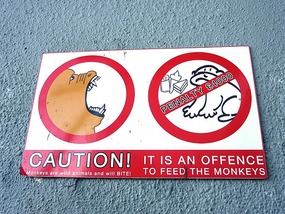
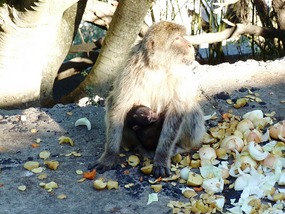
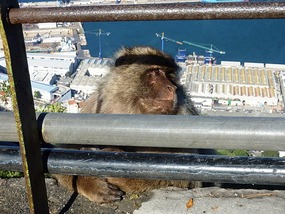
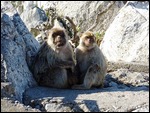














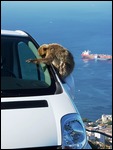
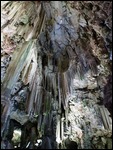
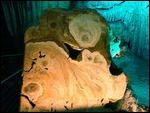
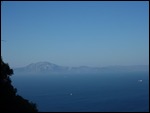
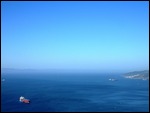
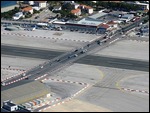
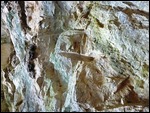
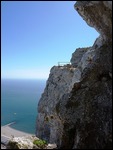

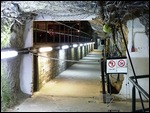
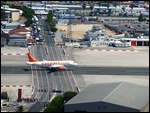
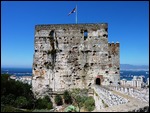
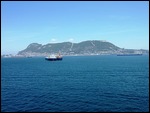
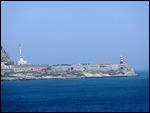
2025-05-22